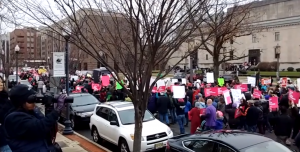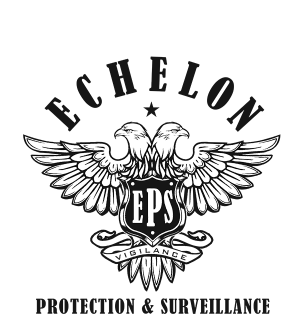By: Stuart J. Visnov, Chief Executive Officer, Echelon Protection & Surveillance
Word count: 600
 Over the past several years, we have all witnessed unprecedented volatility in our national politics. To be sure, there is a lot of anger, resentment and finger pointing between members of our two main parties. This condition is not confined to Washington D.C. or the halls Congress. Local politics, town halls, community events and more often get quite heated and even violent. During the 2016 presidential campaign, the evening news featured footage of a shooting, fights and general aggressive behavior, and since the election, town halls, in particular those held by Republicans, have been interrupted by angry protesters and minor skirmishes have ensued.
Over the past several years, we have all witnessed unprecedented volatility in our national politics. To be sure, there is a lot of anger, resentment and finger pointing between members of our two main parties. This condition is not confined to Washington D.C. or the halls Congress. Local politics, town halls, community events and more often get quite heated and even violent. During the 2016 presidential campaign, the evening news featured footage of a shooting, fights and general aggressive behavior, and since the election, town halls, in particular those held by Republicans, have been interrupted by angry protesters and minor skirmishes have ensued.
Some politicians are requesting police escorts as they travel to and from their town halls, and others hire their own private security details to protect them. But what about attendees? Are there measures that can be put in place to ensure the safety of participants? There are plenty of guidelines from child safety organizations on how to keep children safe at public events, but when the adults in the room are endangering each other, this opens up a new set of security challenges.
The obvious solutions include hiring security guards or requesting that local police stations send an officer to an event that might be politically volatile. Unfortunately, most police departments charge a very high hourly rate to protect local meetings, and if they get an emergency call they may unexpectedly leave you unprotected. Event organizers can also try to recruit off-duty police officers or other security professionals to volunteer at events. The visible presence of security teams is certainly a strong deterrent to those who might be inclined to start trouble.
Meeting organizers should consider adding comments about safety, egress and outline behavioral guidelines during opening remarks. This might help mitigate spontaneous aggressive behavior, but in many cases, individuals and groups come to a meeting or event with pre-planned intent to disrupt. Even so, that can be addressed directly, and guidelines that allow all voices to be heard can go a long way towards bringing down the emotional temperature of a room.
Whenever possible, surveillance systems should also be in place. It’s a good deterrent strategy to mention at the outset of a meeting that participants are being digitally recorded. Although digital technology has made video security systems very affordable, many buildings, particularly those with historical or architectural interest, and certainly those with landmark preservation status, have restrictions in place as to what can be done both visually and structurally to the building. Workarounds include temporary free-standing camera systems. Remember, that cameras can only help you after the fact, so vigilant security professionals are crucial when unwanted activity begins.
Of course, planning any event well in advance gives organizers a chance to really consider security needs with a critical eye. Events with big name speakers, politicians and public figures, especially if they lean strongly to one side of the political spectrum, are certain to require more security than other, less volatile events. Meetings that are open to the public or that may attract attendees from outside of the community may also require tighter security.
In any case, safety and security starts with the awareness that any event may be a target for violence or disruption. The simple truth is that we no longer have the luxury to assume that every event will be peaceful and orderly, and if there is any threat to the well-being of attendees, security and protection has to be a top priority.


